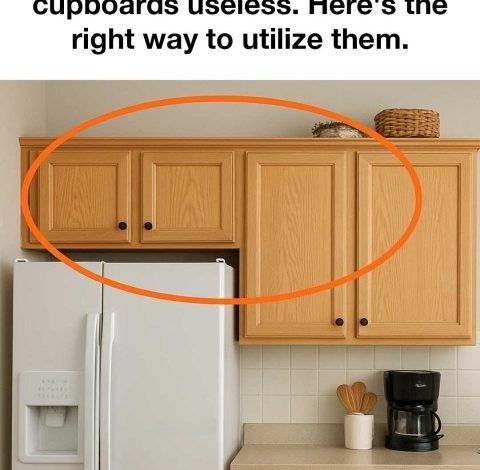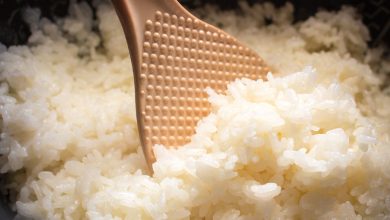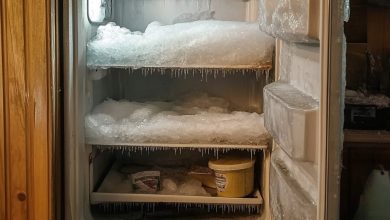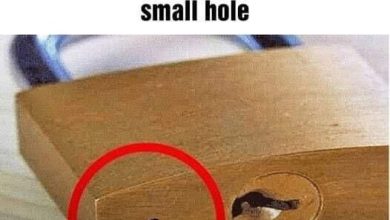Most people consider these cupboards useless. Here’s the right way to utilize them.

Many people tend to overlook certain cupboards in their homes, often dismissing them as “useless” or impractical. These are typically the spaces that are a bit tricky to get to, like the cabinets high above the refrigerator or tucked away in kitchen corners. However, with a little creative thinking and some smart organization, these often-ignored areas can actually become incredibly useful storage spots.
Making the most of every cupboard in your home isn’t just about tidying up; it also makes your entire living space work better for you. By looking at these neglected areas in a new light, you can boost your home organization and make daily tasks much simpler. This guide will share some clever ways to transform those overlooked cupboards into highly functional storage.
1. Getting to Know Your Overlooked Cabinet Space
The first step to making these cupboards useful is to really understand their size and what they could potentially hold. Often, these spots have odd shapes or are placed in awkward positions. Think about that narrow cabinet above the fridge, which might be “12 inches high and 24 inches deep.” While standard items might not fit well, these dimensions can be perfect for very specific things.
Also, consider those corner cabinets that are deep and hard to reach. These can be quite large, sometimes “up to 36 inches deep,” which makes them ideal for storing things you don’t need every single day. Knowing these exact measurements helps you plan effectively and pick out the best storage solutions.
2. Storing Appliances You Don’t Use Every Day
Most kitchens have appliances that aren’t pulled out daily, like “waffle makers, slow cookers, or ice cream machines.” The cupboards that are harder to reach are perfect for these items. For instance, the space above the refrigerator can easily hold a “slow cooker that is 10 inches high and 15 inches wide.” This helps keep your countertops clear and your easy-to-reach cupboards free for items you use all the time.
By grouping these less-frequently used appliances and putting them in these less accessible cupboards, you can keep your kitchen tidy and efficient, all while knowing your appliances are right there when you need them.
3. Organizing with Bins for Easy Access
Using bins is a fantastic way to keep things neat in deep or high cupboards. “Clear plastic bins, measuring around 12 inches by 16 inches,” are great because you can label them and put similar items together. This way, you can simply pull out a bin to find what you need instead of having to dig around in the back of the cupboard.
Bins can also be stacked, which helps you use the vertical space really well. When you choose bins with handles, it becomes super easy to slide them in and out of those tough-to-reach spots, helping you get the most out of your cupboard space.
4. Making the Most of Vertical Space
Often, the height within cupboards isn’t used to its full potential. Adding adjustable shelves can help you maximize this space. For example, in a “cupboard that is 24 inches high,” adding an extra shelf can actually double your storage capacity. Shelf risers are another excellent option, letting you stack items without squishing the ones below.
Consider using tension rods or hooks to hang items like mugs or kitchen tools, freeing up shelf space for other things. By thinking about vertical storage, you can significantly increase how much your cupboards can hold.
5. Conveniently Storing Bulk Items
Larger items you buy in bulk, such as paper towels, canned goods, or extra pantry staples, can be stored in these less accessible cupboards. For example, a deep corner cupboard is perfect for holding “large packs of paper towels or toilet paper,” keeping them out of sight but still easy to get when you need them.
Using stackable bins or baskets can help keep these bulk items organized, making it simple to rotate your stock and ensure older items are used first. This method not only saves space but also helps you manage your supplies efficiently.
6. Solutions for Seasonal Storage
Items you only use at certain times of the year, such as holiday decorations or seasonal cookware, can find a home in these cupboards. For instance, a cupboard above the fridge could perfectly house a “turkey roaster that is only used during the holidays.” By storing these items out of the way, you free up valuable space in your more accessible cupboards for things you use on a regular basis.
Labeling these seasonal storage areas clearly can help you remember what’s stored where, making it easy to find items when the season changes.
7. Keeping Things Safe and Accessible
When storing items in hard-to-reach places, safety is really important. Make sure that heavier items are stored lower down to prevent anything from falling when you’re getting them out. If a cupboard requires a step stool, always ensure the stool is stable and that you have a clear path to access the cupboard safely.
You can make things more accessible by using pull-out shelves or lazy Susans, which allow you to reach items at the back of deep cupboards without having to move everything in front.
8. Creative Tricks for Maximizing Space
There are many clever ways to get more out of your cupboard space. For example, installing a pegboard on the inside of cupboard doors can give you extra storage for small items or utensils. Magnetic strips can be used to store metal lids or knives, freeing up precious drawer space.
Think about using under-shelf baskets to create additional layers within a cupboard, or even installing a tension rod to hang cleaning supplies. These small changes can make a big difference in how organized your cupboards are.
9. Choosing the Right Storage Containers
Picking the right storage containers is key to maximizing cupboard space. Go for square or rectangular containers as they fit together more efficiently than round ones. Clear containers are excellent because you can see what’s inside, saving you time from opening each one to find what you need.
For food storage, consider using airtight containers, which help keep items fresh and prevent pests. Stackable containers are also a great choice, as they allow you to utilize vertical space effectively.
10. Tips for Labeling and Organization
Labeling is a simple yet very effective way to keep your cupboards organized. Use a label maker or write on masking tape to clearly identify the contents of your bins and containers. This makes it easy to find what you need and ensures that everything has a specific spot.
Organize items by category, such as baking supplies, snacks, or cleaning products, and keep them together. This not only makes items easier to find but also helps in maintaining a tidy and organized cupboard.
11. Common Mistakes to Avoid
One frequent mistake is overloading cupboards, which can make it hard to find things and leads to unnecessary clutter. Try to avoid storing items you rarely use, as they can take up valuable space that could be used for items you need more often.
Another common error is failing to measure your cupboard space before buying storage solutions. Without accurate measurements, you might end up with containers or organizers that don’t fit properly, wasting both space and money. Always measure first and plan your storage solutions carefully.




